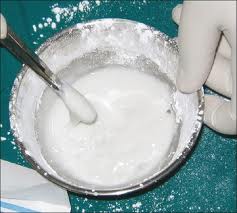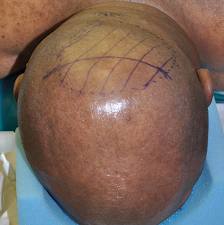The use of skull reshaping with cranioplasty techniques that use synthetic materials dates back for over five decades. While the use of bone grafts is never an option in aesthetic skull procedures, it often is not an option in skull reconstruction either due to the size of the skull defect. This makes the use of alloplastic materials, often called bone substitutes or bone cements, as inevitable for many skull restoration procedures.

Skull reshaping using PMMA has long shown it to be a well tolerated implanted material. A recent published paper in the June 2013 issue of Aesthetic Plastic Surgery entitled ‘Aesthetic Refinement of Secondary Cranioplasty Using Methyl Methacrylate Bone Cements’ is interesting as it provides a more recent patient experience. Over a three year period the authors report on 20 patients who had PMMA implanted in their skull. Their use was reconstructive in nature for trauma and craniotomy patients and was used as a total inlay in the majority of the patients. (85%) The size of the cranioplasties was from 30 to 144 cm2 in size and involved implanted material volumes of 20 to 70 grams.
After an average two year followup period, no patients showed any evidence of implant infection, exposure, or extrusion. In addition, the PMMA reconstructions were structurally stable over this time period all the patients. The key to such successful outcomes in their observation were adequate and healthy overlying scalp tissues.

PMMA is an effective and safe cranioplasty material. I have implanted far more PMMA in aesthetic patients than is in this paper for reconstructive purposes. I have been impressed with how well PMMA performs even though it is not remotely similar to its distant cousin, the hydroxyapatite bone cements. It does particularly well in the aesthetic skull augmentation patient undoubtably because the scalps are healthy and have never had surgery. Successful skull augmentation outcomes are predicated on normal scalp tissues because they will be stretched as the skull is built up underneath it.
Dr. Barry Eppley
Indianapolis, Indiana


